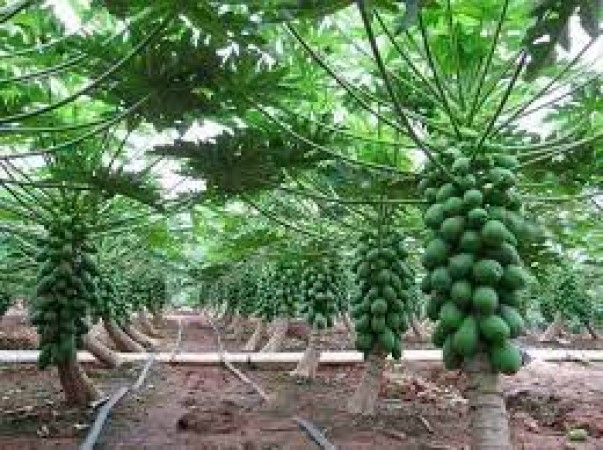
Papaya farming can be a lucrative venture if managed properly. Before diving in, it's essential to understand the basics of papaya farming, including soil requirements, climate conditions, and pest management strategies.
2. Choosing the Right Location
Selecting the right location is crucial for papaya farming success. Papayas thrive in warm climates with well-drained soil and plenty of sunlight. Consider factors such as temperature, rainfall, and soil quality when choosing a location for your papaya farm.
3. Soil Preparation
Preparing the soil is key to ensuring healthy papaya growth. Papayas prefer sandy, loamy soil with good drainage. Conduct soil tests to determine its pH levels and nutrient content. Amend the soil as needed to create optimal growing conditions for papayas.
4. Selecting Papaya Varieties
There are various papaya varieties available, each with its own unique characteristics. Consider factors such as fruit size, taste, and resistance to diseases when selecting papaya varieties for your farm.
5. Propagation Methods
Papayas can be propagated from seeds or by using tissue culture techniques. Choose the propagation method that best suits your farming goals and resources.
6. Planting Papaya Seeds or Seedlings
Whether planting seeds or seedlings, proper spacing is essential to promote healthy growth and prevent overcrowding. Follow spacing recommendations based on the specific papaya variety you're growing.
7. Providing Adequate Water
Papayas require consistent moisture to thrive, especially during the initial stages of growth. Implement an efficient irrigation system to ensure papaya plants receive an adequate amount of water throughout the growing season.
8. Fertilization
Applying the right type and amount of fertilizer is crucial for papaya farming success. Use fertilizers rich in nitrogen, phosphorus, and potassium to promote vigorous growth and fruit production.
9. Pest and Disease Management
Papayas are susceptible to various pests and diseases, including fruit flies, aphids, and powdery mildew. Implement integrated pest management strategies to control pests and minimize the risk of disease outbreaks.
10. Pruning and Thinning
Regular pruning and thinning help promote airflow and sunlight penetration, which are essential for healthy papaya growth. Remove diseased or damaged branches and thin out excess fruit to improve overall yield and quality.
11. Harvesting Papayas
Papayas typically mature within 6 to 9 months after planting. Harvest ripe papayas by gently twisting them from the tree. Handle harvested papayas with care to avoid bruising and damage.
12. Marketing and Sales
Develop a marketing strategy to sell your papayas locally or to wholesalers and retailers. Consider options such as farmers' markets, grocery stores, and direct-to-consumer sales to maximize profits.
13. Value-Added Products
Explore opportunities to create value-added products using papayas, such as jams, juices, and dried fruit snacks. Diversifying your product offerings can help increase revenue and attract more customers.
14. Investing in Technology
Utilize modern farming technologies and equipment to streamline operations and improve efficiency. Consider investing in tools such as drip irrigation systems, weather monitoring devices, and automated harvesting equipment.
15. Continuous Learning and Improvement
Stay updated on the latest advancements and best practices in papaya farming through workshops, seminars, and online resources. Continuously evaluate and adjust your farming techniques to optimize productivity and profitability.
16. Networking and Collaboration
Build relationships with other papaya farmers, agricultural experts, and industry professionals to exchange ideas, share experiences, and explore collaboration opportunities. Networking can provide valuable insights and support to help you succeed in papaya farming.
17. Sustainable Practices
Implement sustainable farming practices to minimize environmental impact and ensure long-term viability. This includes practices such as crop rotation, soil conservation, and water conservation.
18. Financial Management
Manage your finances effectively by keeping detailed records of expenses, income, and profitability. Monitor key financial metrics and make informed decisions to maximize returns on investment.
19. Risk Management
Identify and mitigate potential risks that could affect your papaya farming business, such as adverse weather conditions, market fluctuations, and pest infestations. Develop contingency plans to minimize disruptions and protect your investment.
20. Scaling Up
Once you've established a successful papaya farming operation, consider expanding your business by acquiring more land, diversifying your product offerings, or entering new markets. Continuously assess opportunities for growth and expansion to capitalize on your success.
Shake Up Your Morning Routine: 10 Alternatives to Tea or Coffee to Combat Drowsiness
The Cool Choice for Weight Loss: 10 Reasons to Sip on Sattu This Summer